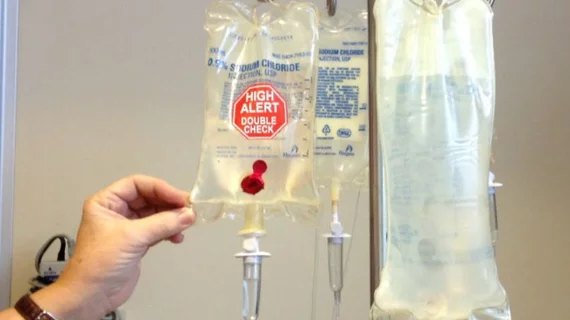CEM vs breast MRI: Which is best for assessing treatment response?
When assessing breast cancer patients’ responses to neoadjuvant chemotherapy, contrast-enhanced mammography is emerging as a suitable alternative to breast MRI.
A recent analysis of 51 patients revealed that contrast-enhanced mammography and MRI offered comparable assessments of lesion size, and both had similar specificity for pathologic complete response (pCR). While both modalities overestimated lesion size in comparison to pathology, experts involved in the research suggested that both CEM and breast MRI could play specific roles in monitoring treatment responses.
“MRI had higher sensitivity for pCR,” corresponding author Rubina Manuela Trimboli, of IRCCS Humanitas Research Hospital in Milan, Italy, and co-authors shared, adding that “Delayed CEM acquisition may help detect residual DCIS.”
Each of the 51 patients (mean age 46) had biopsy-proven breast cancer and were eligible for neoadjuvant therapy (NAT). The women underwent both CEM and MRI before, during and after their treatment, with the post-treatment CEM including a six-minute delayed acquisition. Two breast radiologists—one with more experience analyzing CEM and one more experienced with breast MRIs—assessed the imaging for the size and presence of an enhancing lesion and the presence and/or absence of invasive cancer or DCIS.
For CEM, post-treatment analysis of pCR yielded a sensitivity and specificity 81% and 83%; the figures were 81% aand 89% for the delayed acquisitions. In comparison, post-treatment MRI sensitivity and specificity were 100% and 86%, respectively. CEM, MRI and delayed CEM overestimated residual tumor size on post-treatment imaging by 0.8 mm, 1.9 mm and 1.2 mm.
Given the comparable results for both modalities, the researchers indicated a role for CEM when MRI exams are not feasible:
“While MRI remains the preferred test for NAT monitoring, the findings support CEM as a useful alternative when MRI is contraindicated or not tolerated.”
View the study abstract in the American Journal of Roentgenology.
Reference:
Contrast-Enhanced Mammography Versus MRI in the Evaluation of Neoadjuvant Therapy Response in Patients With Breast Cancer: A Prospective Study. D. Bernardi, G. Vatteroni, A. Acquaviva, M. Valentini, V. Sabatino, I. Bolengo, M. Pellegrini, C. Fantò, and R.M. Trimboli. American Journal of Roentgenology.
Related breast imaging news:
Do race and ethnicity impact the accuracy of diagnostic mammograms?
DBT is better for women with increased breast cancer risks
MRI-based radiomics boosts triple-negative breast cancer detection
Researcher considers greater role of AB-MRI for patients with personal history of breast cancer

